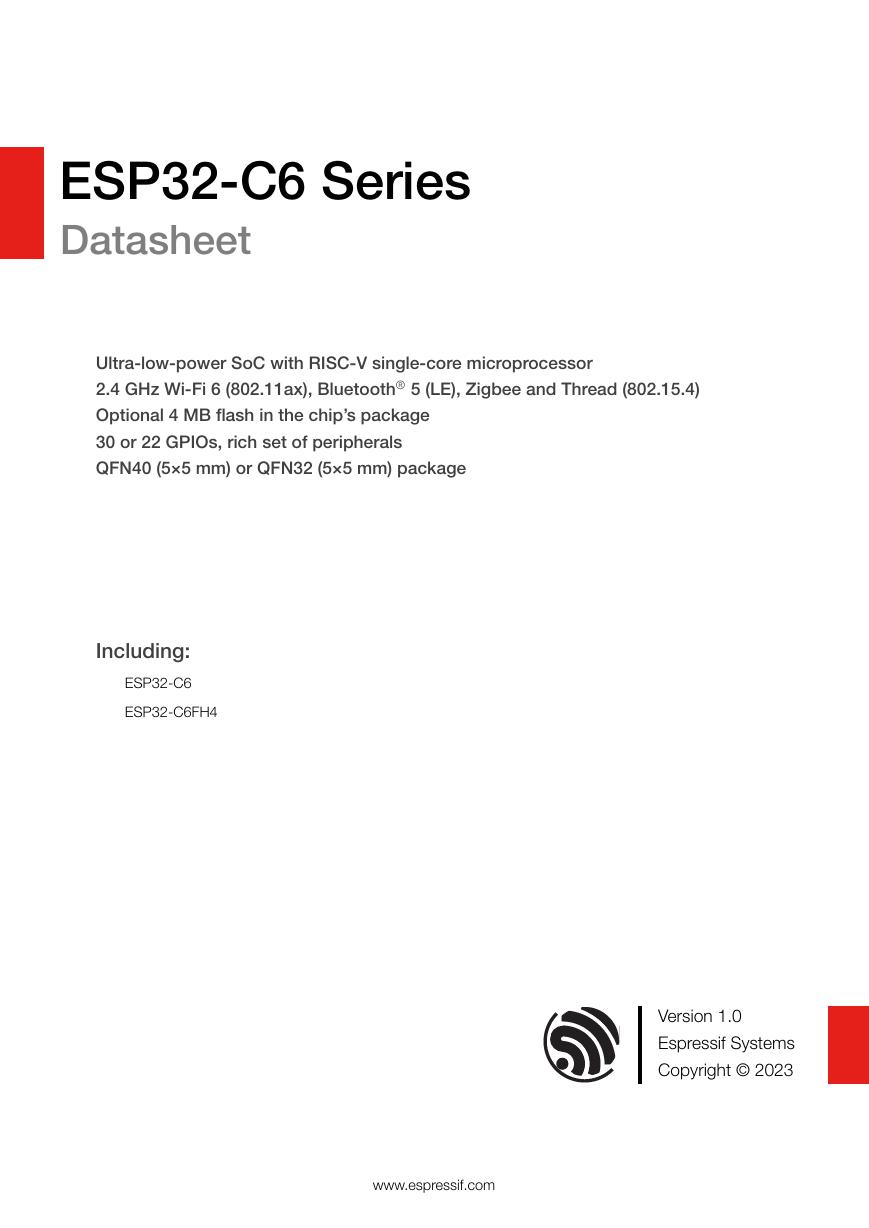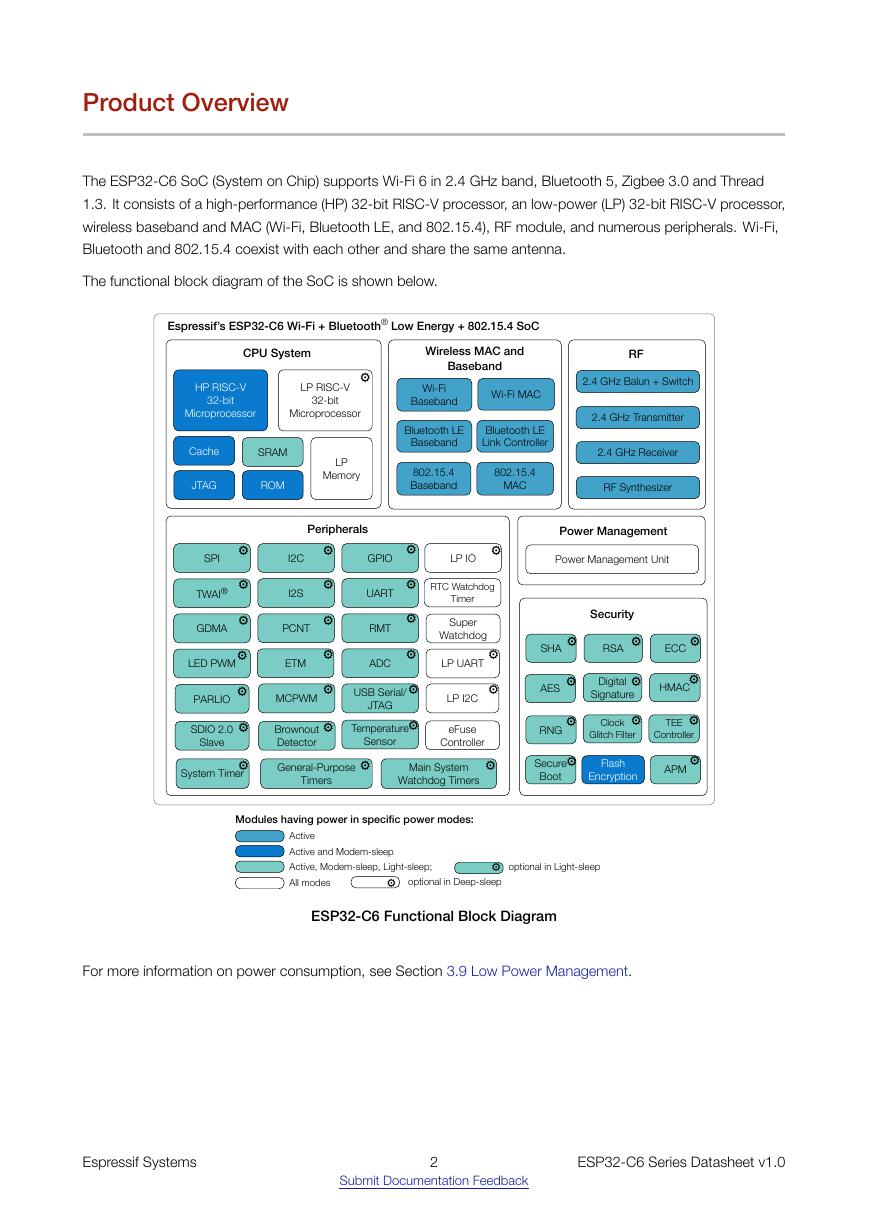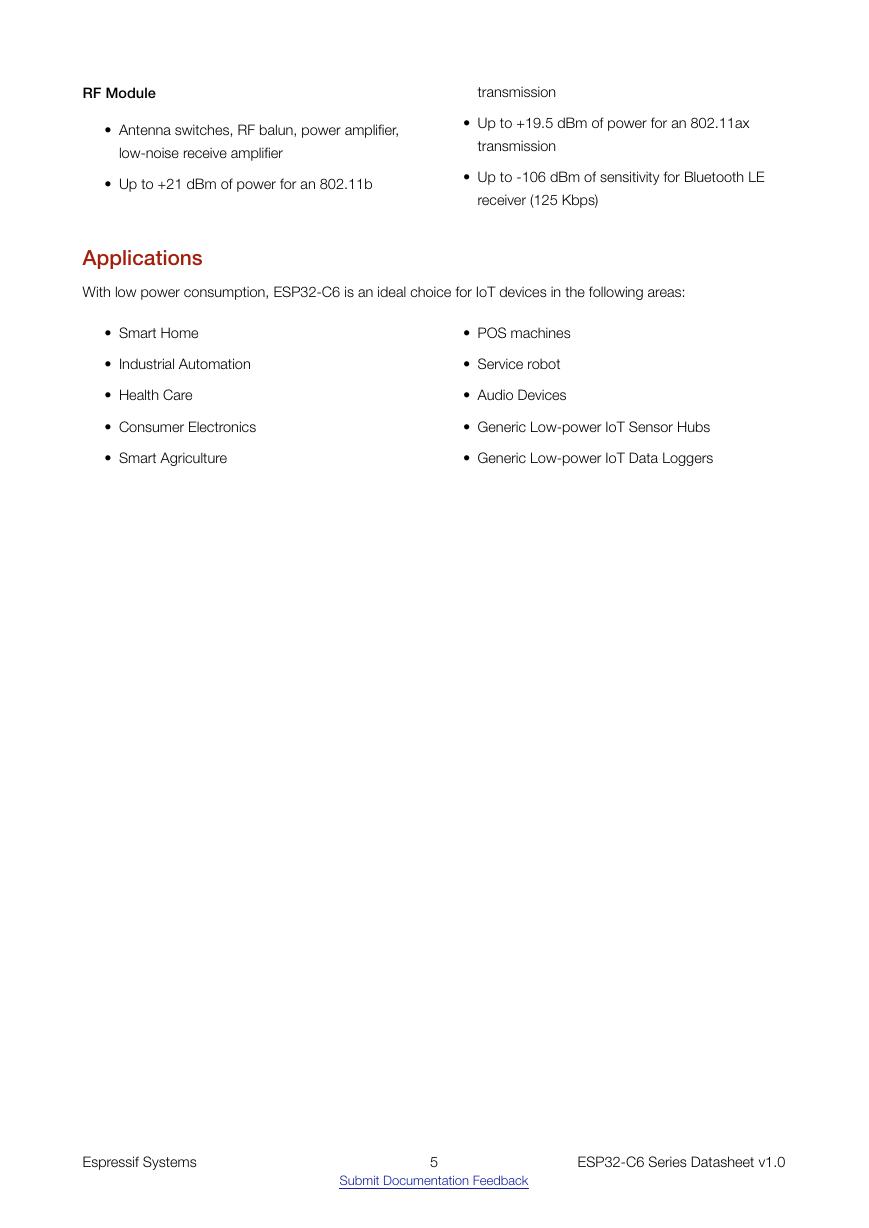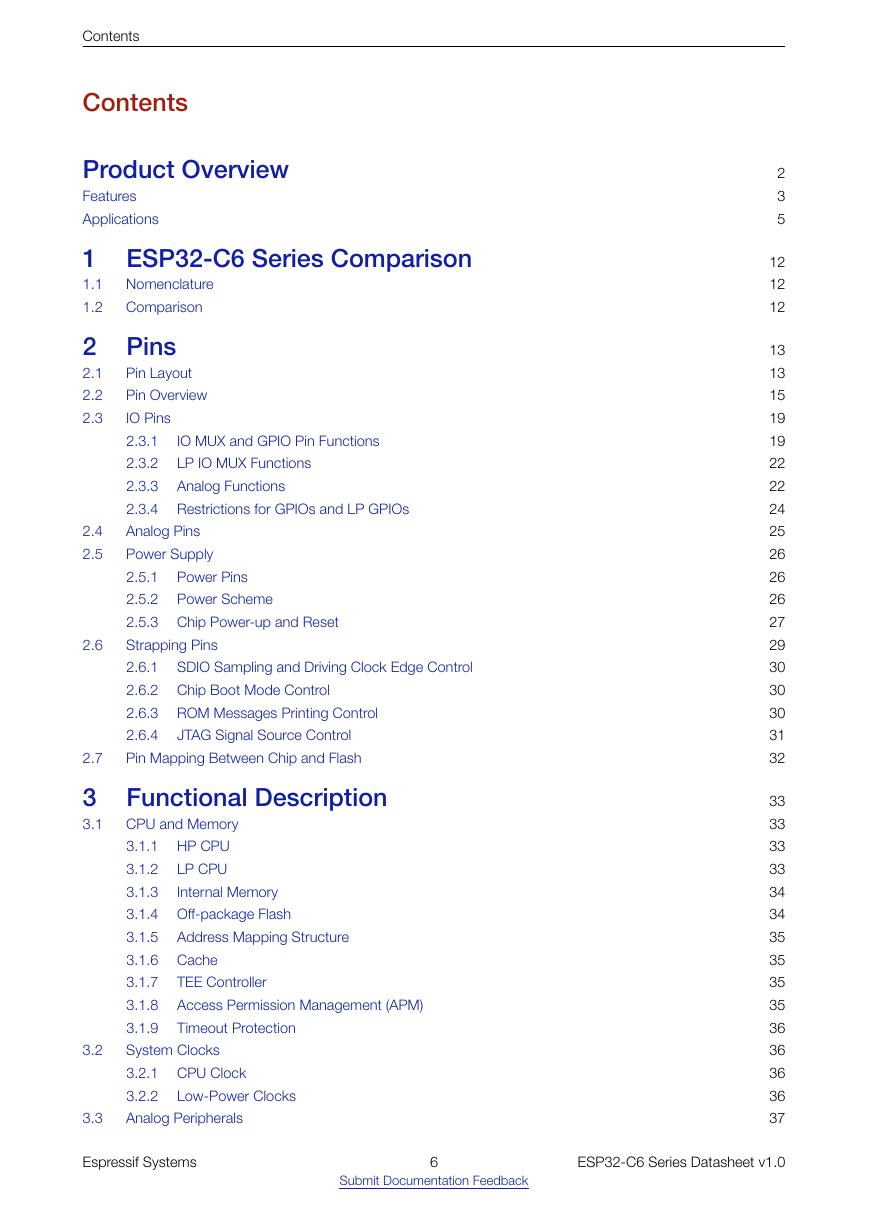Product Overview
Features
Applications
1 ESP32-C6 Series Comparison
1.1 Nomenclature
1.2 Comparison
2 Pins
2.1 Pin Layout
2.2 Pin Overview
2.3 IO Pins
2.3.1 IO MUX and GPIO Pin Functions
2.3.2 LP IO MUX Functions
2.3.3 Analog Functions
2.3.4 Restrictions for GPIOs and LP GPIOs
2.4 Analog Pins
2.5 Power Supply
2.5.1 Power Pins
2.5.2 Power Scheme
2.5.3 Chip Power-up and Reset
2.6 Strapping Pins
2.6.1 SDIO Sampling and Driving Clock Edge Control
2.6.2 Chip Boot Mode Control
2.6.3 ROM Messages Printing Control
2.6.4 JTAG Signal Source Control
2.7 Pin Mapping Between Chip and Flash
3 Functional Description
3.1 CPU and Memory
3.1.1 HP CPU
3.1.2 LP CPU
3.1.3 Internal Memory
3.1.4 Off-package Flash
3.1.5 Address Mapping Structure
3.1.6 Cache
3.1.7 TEE Controller
3.1.8 Access Permission Management (APM)
3.1.9 Timeout Protection
3.2 System Clocks
3.2.1 CPU Clock
3.2.2 Low-Power Clocks
3.3 Analog Peripherals
3.3.1 Analog-to-Digital Converter (ADC)
3.3.2 Temperature Sensor
3.4 Digital Peripherals
3.4.1 Universal Asynchronous Receiver Transmitter (UART)
3.4.2 Serial Peripheral Interface (SPI)
3.4.3 I2C Interface
3.4.4 I2S Interface
3.4.5 Pulse Count Controller (PCNT)
3.4.6 USB Serial/JTAG Controller
3.4.7 TWAI Controller
3.4.8 SDIO 2.0 Slave Controller
3.4.9 LED PWM Controller
3.4.10 Motor Control PWM (MCPWM)
3.4.11 Remote Control Peripheral
3.4.12 Parallel IO (PARLIO) Controller
3.4.13 General DMA Controller (GDMA)
3.4.14 Event Task Matrix (ETM)
3.5 Radio
3.5.1 2.4 GHz Receiver
3.5.2 2.4 GHz Transmitter
3.5.3 Clock Generator
3.6 Wi-Fi
3.6.1 Wi-Fi Radio and Baseband
3.6.2 Wi-Fi MAC
3.6.3 Networking Features
3.7 Bluetooth LE
3.7.1 Bluetooth LE PHY
3.7.2 Bluetooth LE Link Controller
3.8 802.15.4
3.8.1 802.15.4 PHY
3.8.2 802.15.4 MAC
3.9 Low Power Management
3.10 Timers
3.10.1 System Timer
3.10.2 General Purpose Timers
3.10.3 Watchdog Timers
3.11 Cryptography/Security Components
3.11.1 AES Accelerator (AES)
3.11.2 ECC Accelerator (ECC)
3.11.3 HMAC Accelerator (HMAC)
3.11.4 RSA Accelerator (RSA)
3.11.5 SHA Accelerator (SHA)
3.11.6 Digital Signature (DS)
3.11.7 External Memory Encryption and Decryption (XTS_AES)
3.11.8 Random Number Generator (RNG)
3.12 Peripheral Pin Configurations
4 Electrical Characteristics
4.1 Absolute Maximum Ratings
4.2 Recommended Power Supply Characteristics
4.3 VDD_SPI Output Characteristics
4.4 DC Characteristics (3.3 V, 25 °C)
4.5 ADC Characteristics
4.6 Current Consumption
4.6.1 RF Current Consumption in Active Mode
4.6.2 Current Consumption in Other Modes
4.7 Reliability
5 RF Characteristics
5.1 Wi-Fi Radio
5.1.1 Wi-Fi RF Transmitter (TX) Characteristics
5.1.2 Wi-Fi RF Receiver (RX) Characteristics
5.2 Bluetooth LE Radio
5.2.1 Bluetooth LE RF Transmitter (TX) Characteristics
5.2.2 Bluetooth LE RF Receiver (RX) Characteristics
5.3 802.15.4 Radio
5.3.1 802.15.4 RF Transmitter (TX) Characteristics
5.3.2 802.15.4 RF Receiver (RX) Characteristics
6 Packaging
7 Related Documentation and Resources
Appendix A – ESP32-C6 Consolidated Pin Overview
Revision History
















 V2版本原理图(Capacitive-Fingerprint-Reader-Schematic_V2).pdf
V2版本原理图(Capacitive-Fingerprint-Reader-Schematic_V2).pdf 摄像头工作原理.doc
摄像头工作原理.doc VL53L0X简要说明(En.FLVL53L00216).pdf
VL53L0X简要说明(En.FLVL53L00216).pdf 原理图(DVK720-Schematic).pdf
原理图(DVK720-Schematic).pdf 原理图(Pico-Clock-Green-Schdoc).pdf
原理图(Pico-Clock-Green-Schdoc).pdf 原理图(RS485-CAN-HAT-B-schematic).pdf
原理图(RS485-CAN-HAT-B-schematic).pdf File:SIM7500_SIM7600_SIM7800 Series_SSL_Application Note_V2.00.pdf
File:SIM7500_SIM7600_SIM7800 Series_SSL_Application Note_V2.00.pdf ADS1263(Ads1262).pdf
ADS1263(Ads1262).pdf 原理图(Open429Z-D-Schematic).pdf
原理图(Open429Z-D-Schematic).pdf 用户手册(Capacitive_Fingerprint_Reader_User_Manual_CN).pdf
用户手册(Capacitive_Fingerprint_Reader_User_Manual_CN).pdf CY7C68013A(英文版)(CY7C68013A).pdf
CY7C68013A(英文版)(CY7C68013A).pdf TechnicalReference_Dem.pdf
TechnicalReference_Dem.pdf